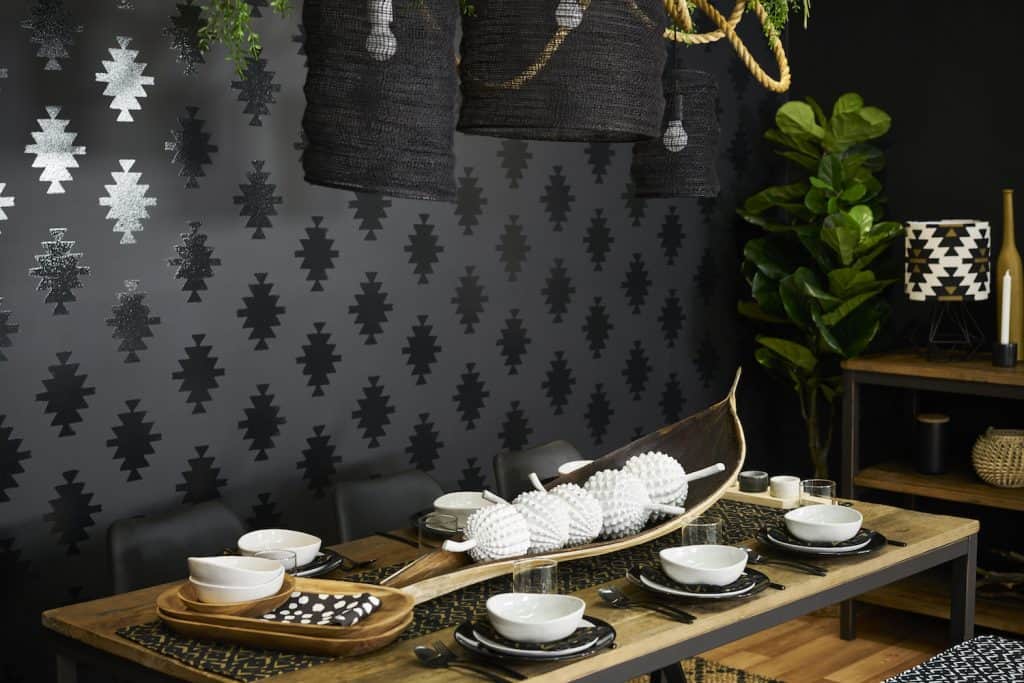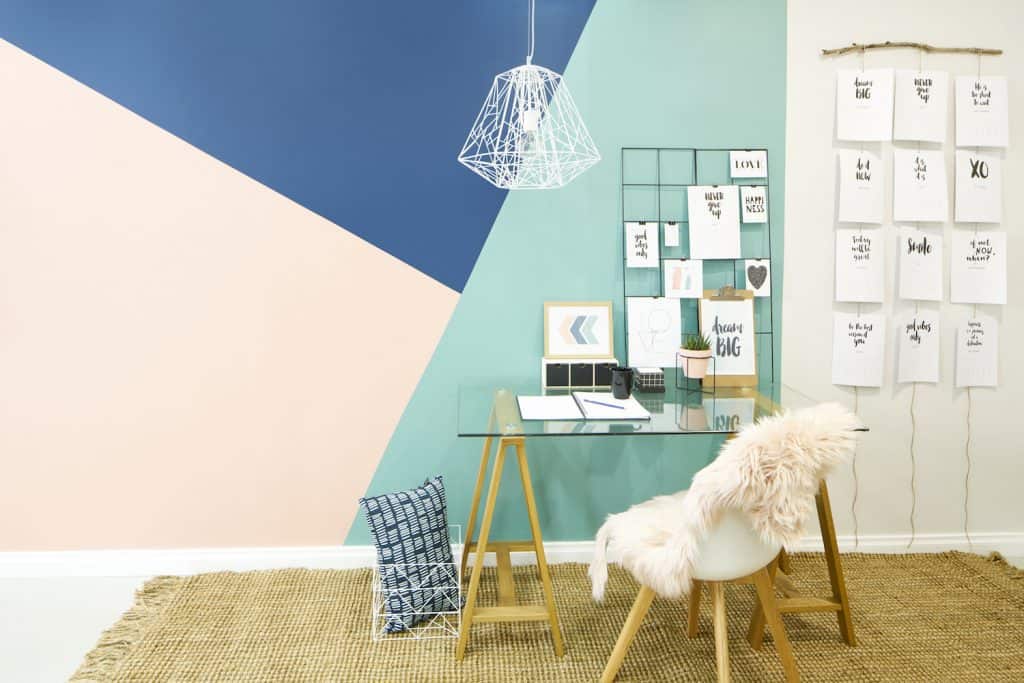Painted shapes have been evolving for some years with stencils really leading the charge. From a single feature wall to trailing scenery over two or three walls, this relatively simple interior decorating trend can achieve dynamic results.
However, if you don’t fancy stencils and your inner artist finds murals challenging, then you’ll love these three creative paint ideas. Interior Designer, television presenter, ‘The Block’ judge, and Taubmans Brand Ambassador, Shaynna Blaze, explains where and how to best use painted shapes. Scroll down for the DIY videos for each of these projects.
“Any room can take shapes and patterns, but you need to be aware of the intensity of the colour and how many shapes and angles you put in a room – sometimes less is more! Simple is always the way to go for bedrooms, nurseries and main areas so sticking to two or three colours is perfect, and then keep the shapes to a simple repetitive pattern if you are using stencils, and one or two major angles if you are doing linear shapes.”
Painted Shapes in the Dining Room
Combine matt and gloss paints for a unique ‘wallpaper’ effect. Your friends won’t believe you did it yourself. But it’s quite easy if you have a good stencil and a sense of order for the repeat pattern. The trick is to apply your stencil ‘print’ with equal separation from each individual shape. This will give the desired wallpaper effect. Create your own stencils for a totally unique room.
This type of effect is perfect for a dining room where people gather around food. It’s bold without overwhelming the space. Bring the pattern to life with soft, indirect lighting (candlelight is perfect), and create a talking point. In this room, Taubmans Endure Interior Low Sheen Paint in Black Fox was used (RRP$82 for 4L)


Painted Shapes to Create Calming Spaces
A home office, study, or a place where creativity needs to be stimulated will benefit from colour and shapes. Taubmans recently partnered with leading author and neuroscientist Dr Stan Rodski to explore the many positive benefits of patterns, colours and colouring on your walls. Performance can be enhanced by choosing patterns that align with your level of required focus.
Selecting colours that are either calming or stimulating, depending on your needs, is the final step to create the perfect ‘thinking pod’ for your home. Try Taubmans Silver Leaf for a calm environment. In this room, Taubmans Endure Interior Low Sheen Paint in Catalina Green (RRP $$82 for 4l), Celestial Blue (RRP $82 for 4L) and Coral Vista (RRP $63.86 for 4L) were used.


Painted Shapes that Kid’s Can Do
When kids are involved in the decor of their bedrooms they tend to take better care of their toys. This is a fun DIY for most kids so let them choose the shapes and shades they want. However, do limit the colour palette to no more than three otherwise the room may overstimulate them when it’s painted.
If you can get them to be patient, try a single shape in a couple of colours using Taubmans Sample Pots. Taubmans Hi Ho Silver and Violet Verbena work beautifully for both boys and girls rooms. In this room, Taubmans Endure Interior Low Sheen Paint in Cyberpunk was used (RRP $63.86 for 4L)


Videos To Help You
Taubmans have rather conveniently created three videos for each of above DIY projects.
Ingredients for a delightful dining experience – http://www.taubmans.com.au/how-to/create-wall-stencils
Creating creative spaces at home – http://www.taubmans.com.au/how-to/paint-geometric-shapes
Putting the kids to work – http://www.taubmans.com.au/how-to/paint-a-mountain-mural
Grace Garrett, who styled the videos for Taubmans, adds her thoughts on choosing the perfect colours for painting with patterns:
“Colour has a major impact on the perception of space, so before adding a shapes or patters to a wall, you need to consider how you would like the space to feel: warm and cosy, light and spacious, dark and moody, then select your colours accordingly.
Traditionally, warm colours advance and cool colours recede, but studies have found that it is brightness not warmth that is the significant factor. So, remember bright colours advance, whether they are cool or warm colours. A cool greyed-off yellow will recede but a bright yellow will advance, therefore making the space appear smaller.”



